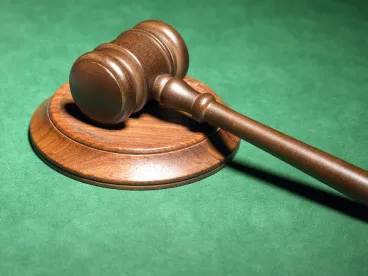Addressing the use of a certification mark in connection with information systems training, the US Court of Appeals for the Second Circuit reversed and remanded a district court grant of summary judgment for the defendants on the plaintiff’s claims of infringement, false designation of origin and false advertising, and unfair competition, finding that confusion as to sponsorship, affiliation or connection may trump a nominative fair use defense.Int’l Info. Sys. Sec. Certification Consortium, Inc. v. Sec. Univ., LLC, Case No. 14-3456 (2d Cir., May 18, 2016) (Pooler, J.).
International Information Systems Security Certification Consortium (ISC2) owns the certification mark CISSP, meaning Certified Information Systems Security Professional. A certification mark is a mark used by a person other than its owner to certify the quality, accuracy or other characteristics of the associated goods or services.
Security University (SU) offers preparatory classes for ISC2’s CISSP certification exam. In 2010, SU began running advertisements for courses with instructor Clement Dupuis, described as a “master CISSP” or “CISSP master.” After receiving a dissatisfactory response to its cease-and-desist letter, ISC2 filed suit against SU for infringement, false designation of origin and false advertising, and trademark dilution under the Lanham Act, as well as unfair competition under Connecticut state law. ISC2 alleged that SU’s advertisements were likely to confuse or deceive the public by suggesting that ISC2’s CISSP certification could somehow be “mastered,” and by suggesting that SU’s courses “originate with or are sponsored or otherwise approved” by ISC2.
The district court, applying the US Court of Appeals for the Ninth Circuit’s doctrine of nominative fair use and finding no likelihood of confusion as to the source of SU’s services, granted summary judgment in SU’s favor. ISC2 appealed.
The Second Circuit reversed, concluding that the district court had erred in many respects. First, the district court erred in considering only confusion as to source and failing to consider, for example, confusion as to affiliation, sponsorship, endorsement or approval. As the Second Circuit explained, considering only source confusion is particularly problematic in the context of certification marks, which typically do not designate source at all. The district court also erred when it considered only two modes of certification mark infringement: “the use of the mark in a resume of a professional who is in fact not certified by the organization that is the owner of the mark; and the use of the mark on goods that have not in fact been certified.” The Second Circuit explained that a party who has met all the requirements of certification may still infringe a certification mark by using it in such a way that may cause consumer confusion. For instance, although SU instructor Clement Dupuis is a CISSP, consumers may have been misled to believe that he had completed a “master” CISSP certification newly developed by ISC2.
Finally, the Second Circuit explained that the district court erred in applying the Ninth Circuit’s nominative fair use doctrine while failing to consider the Second Circuit’s Polaroid test, which sets out eight factors to be weighed when determining likelihood of consumer confusion. Nominative use is the use of another’s mark to identify the plaintiff’s goods or services, and nominative fair use permits such use under certain circumstances. The Court explained that nominative fair use is not an affirmative defense to infringement, but it found that the doctrine may be helpful.
The Second Circuit remanded the case for the district court to consider the Polaroid factors as well as the nominative fair use factors: “(1) whether the use of the plaintiff’s mark is necessary to describe both the plaintiff’s product or service and the defendant’s product or service, that is whether the product or service is not readily identifiable without use of the mark; (2) whether the defendant uses only so much of the plaintiff’s mark as is necessary to identify the product or service; and (3) whether the defendant did anything that would, in conjunction with the mark, suggest sponsorship or endorsement by the plaintiff holder, that is, whether the defendant’s conduct or language reflects the true or accurate relationship between plaintiff’s and defendant’s products or services.



 />i
/>i

